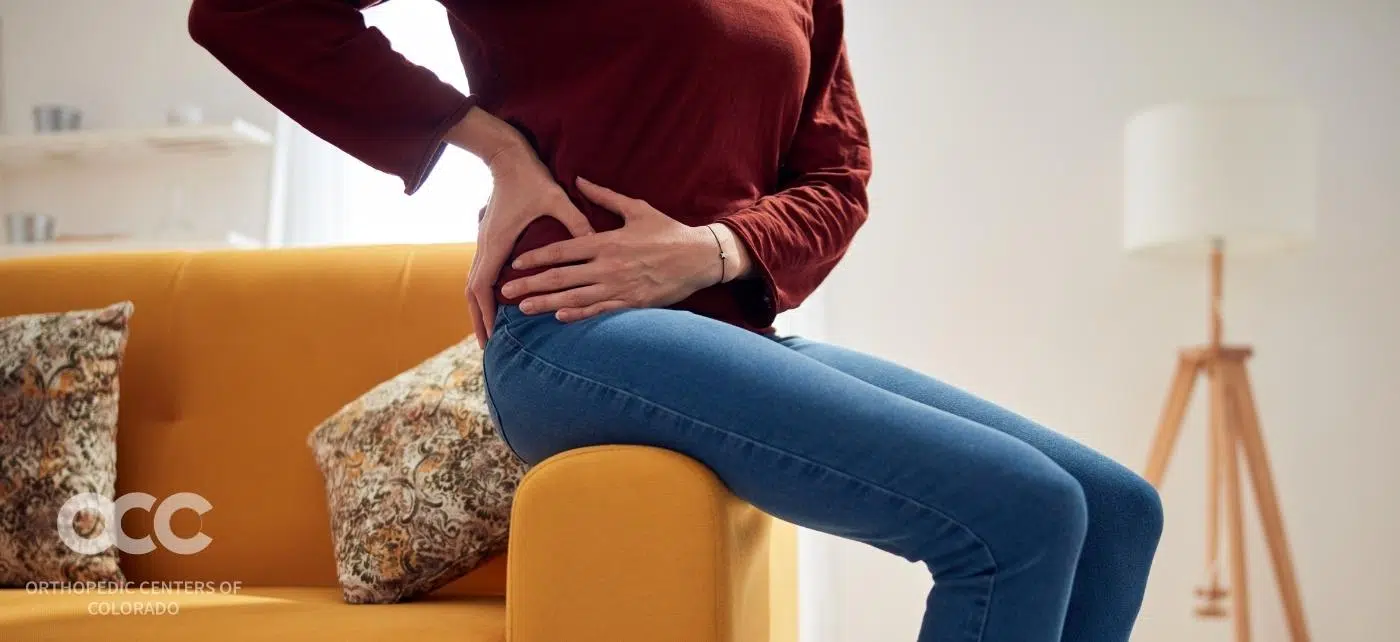Millions of people experience hip pain every year. It can be debilitating, interfering with daily activities; it can limit the ability to perform even the simplest tasks such as putting on shoes and socks or getting in and out of the car. Hip pain can stem from a variety of issues, and it is imperative to understand exactly where the pain is coming from before resorting to risky medications or invasive procedures. The highly-trained and experienced hip specialists at Advanced Orthopedic in Denver, Parker, and Aurora, Colorado, can both identify and treat the pain with the use of hip arthroscopy, a minimally-invasive procedure used to investigate painful issues with the hip joint and its related structures.
OVERVIEW
Arthroscopy is a procedure previously done primarily on joints like the knee and shoulder, but with an improved understanding of certain disorders of the hip, new tools, and ongoing advancements in technology and surgical techniques, hip arthroscopy is becoming an option for more people than ever before. It is estimated that the number of hip arthroscopies in the U.S. increased by more than 600% in the last 15 years.
ABOUT THE HIP
The hip joint is one of the largest ball-and-socket joints in the body that allows motion and gives the stability needed to bear body weight. The hip is located where the head of the femur, or thighbone, fits into a rounded socket of the pelvis. This ball-and-socket construction allows for three distinct types of flexibility:
Hip flexion and extension—moving the leg back and forth
Hip abduction and adduction—moving the leg out to the side (abduction) and inward toward the other leg (adduction)
Rotation—pointing toes inward (internal rotation) and then moving the straightened leg in the direction of the toes
The joint surface is covered by smooth articular cartilage, which acts as a cushion and enables smooth movement of the joint.
SYMPTOMS OF HIP DAMAGE
Frequent early symptoms of a hip problem include pain in and around the hip joint, sometimes radiating into the leg, groin, or buttocks, stiffness or reduced range of motion when attempting to move the joint, and joint instability when attempting to bear weight on the joint or rotate the joint. Other symptoms may include tenderness, difficulty sleeping on the hip, limping, locking, clicking, or catching.
HIP ARTHROSCOPY
Hip arthroscopy sometimes called a “hip scope,” is a minimally invasive surgical procedure used to investigate and treat painful issues with the hip joint and its related structures. In hip arthroscopy, a surgeon will make a few small incisions in the skin of the hip and insert a small flexible tube with a camera and light attached, called an “arthroscope.” The arthroscope magnifies and illuminates structures of the joint with the light that is transmitted through fiber optics. It is attached to a television camera, and the interior of the joint is seen on a television monitor. Diagnostically, this allows the surgeon to identify and determine the condition of the cartilage and ligaments, and whether there is loose cartilage material, inflammation, or bone spurs. If there is a problem, they can perform minimally invasive surgery to treat and repair it. With hip arthroscopy, there is less trauma to the joint and less scarring, and often it provides shorter recovery times and lower risks of complications compared to open surgery.
WHAT CAN HIP ARTHROSCOPY TREAT?
Some of the most common conditions hip arthroscopy is used to treat include:
- Labral Tears
- Femoracetubular Impingement (FAI
- Hip Dysplasia
- CAM Impingement
- Pincer Impingement
- Removal of loose bone or cartilage fragments within the hip joint
- Tendon Tears
- Tendon Releases
- Articular Cartilage Injuries
- Snapping Hip
- Gluteal Tears
- Proximal Hamstring Tears-
HIP ARTHROSCOPY AND ATHLETES
Hip arthroscopy has become a common orthopedic procedure and is frequently highlighted in the sports news with professional athletes undergoing it to return to competition. However, one needn’t be a professional to suffer from diminished athletic performance due to hip pain. Sports and activities that involve extremes of hip flexion and rotation such as football, baseball, track, hockey, golf, wrestling, soccer, rugby, dance, and cheerleading can have a higher incidence of hip issues. Because it is minimally invasive, hip arthroscopy leads to less muscle damage, faster healing, and decreased downtime away from competition. As with most medical conditions, earlier treatment of the problem has been associated with improved outcomes. Therefore, athletes who seek medical treatment earlier for hip pain may improve their chance of a full return to their sport.
WHEN IS HIP ARTHROSCOPY INDICATED?
Often hip pain can be treated with conservative treatment options such as rest, activity modification, anti-inflammatory medications, steroid injections, or physical therapy. Surgery is a final treatment effort when these non-surgical options fail to relieve pain and individuals can’t perform daily activities as usual. Typically, under these conditions, a surgeon will recommend diagnostic hip arthroscopy to identify the cause of pain and then proceed with surgical hip arthroscopy to treat it.
GETTING THE RIGHT DIAGNOSIS
Hip problems can worsen over time. Untreated hip problems can lead to permanent damage and can speed up the development of arthritis. While many orthopedic surgeons can do arthroscopic surgery, not everyone is specialized in scoping the hip. There are approaches specific to the hip where a surgeon’s training is critical in preventing injuries and ensuring success. At Advanced Orthopedics in Denver, Parker, and Aurora, Colorado, their hip surgeons have years of advanced training and experience in treating pain with the use of hip arthroscopies. After getting a detailed medical history, they will perform a thorough physical exam with careful attention to the hips, thighs, back, and the way you walk. They’ll want to know when and how the pain started, things that make it worse, and what has been done to try and relieve the pain on your own. If necessary, imaging such as x-rays CT scans, or an MRI may be called for. Don’t wait. Get back in the game at Advanced Orthopedic now.













